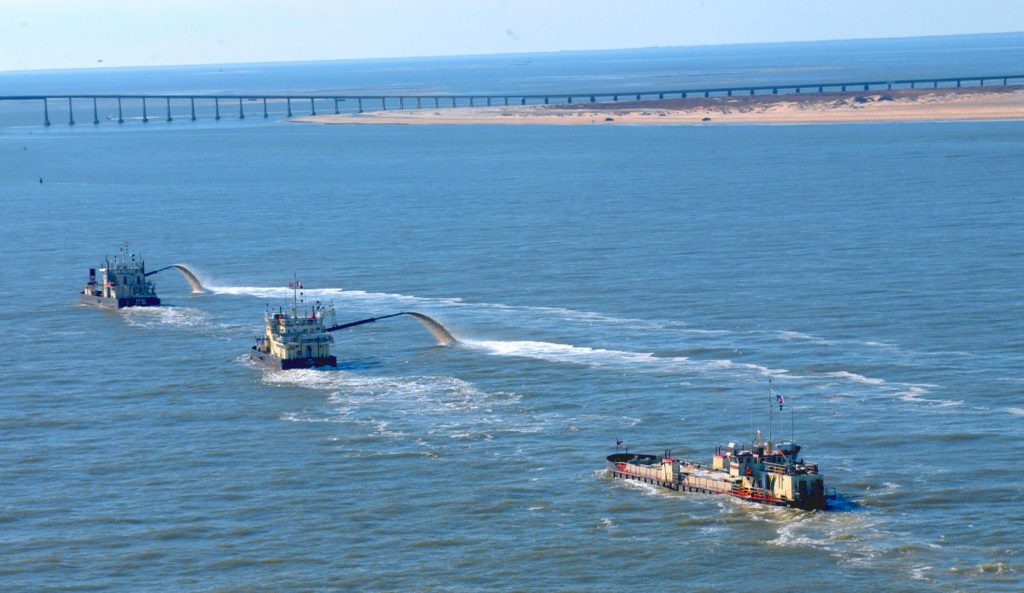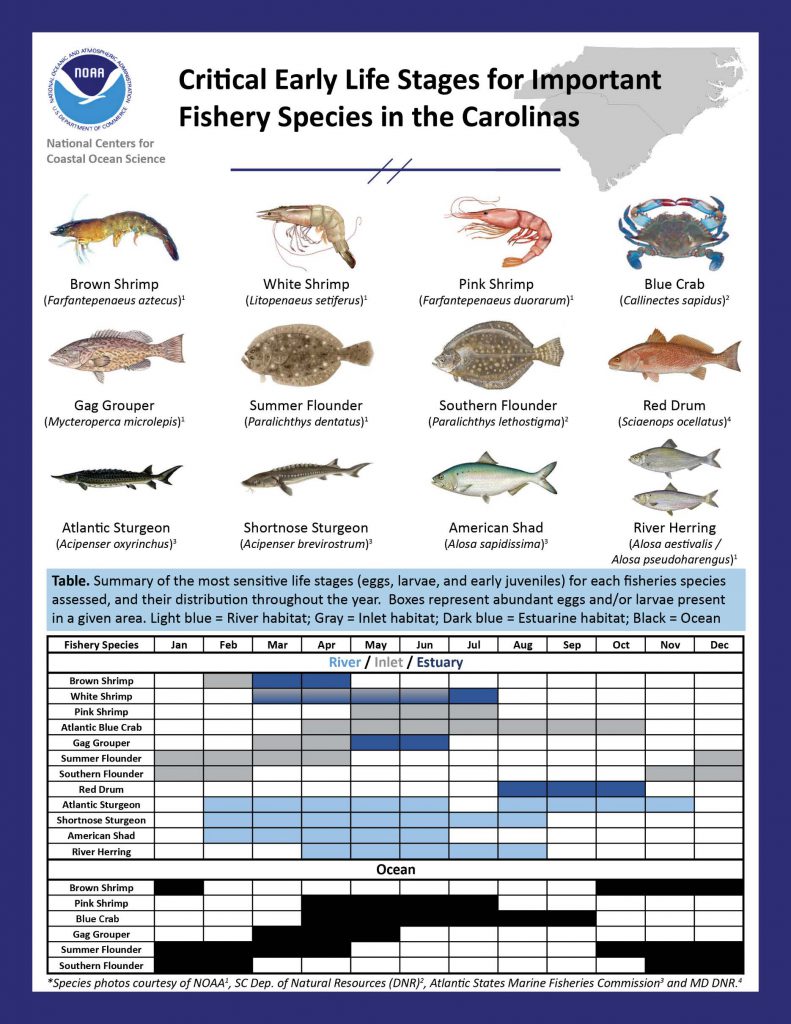Environmental windows or moratoria are used by federal and state regulators in resource management to temporarily reduce adverse environmental impacts associated with coastal development. Seasonal restrictions on construction activities can protect migrations of fish, sensitive life stages of aquatic organisms, and threatened and endangered species. We reviewed the life history and spatiotemporal distribution of 13 managed fish and crustacean species to protect associated fisheries and habitats and minimize the negative impacts of coastal development. The resulting publication and associated data products (maps, infographics) are intended to help coastal managers make timely decisions regarding authorization of coastal development activities.
Why We Care
Healthy habitats mean healthy fisheries and healthy food. In the past, coastal development activities have had extremely negative effects on the surrounding ecosystem, but advances in technology have made it possible to identify vulnerable species and habitats, as well as when these habitats are most crucial to the reproductive cycle and early life history of our managed fisheries. This project uses the best available science to review the life history and distribution of 13 managed fish and crustacean species to protect these fisheries and habitats, while minimizing the negative impacts of coastal development.

What We Did
We provided comprehensive scientific information about managed fisheries in North Carolina and South Carolina for:
- Coastal managers to make timely decisions regarding authorization of coastal development activities.
- NOAA and other regulatory agencies to streamline efforts to minimize impacts to federally managed species, essential fish habitat (EFH), Endangered Species Act (ESA)–listed species, and their associated critical habitats. These organizations provide the scientific basis for conservation and environmental stewardship.
- The research community to guide future research that improves our knowledge of the life history and habitat for managed fisheries to minimize the negative impacts of coastal development.
- Coastal communities to be educated about activities that may affect federally managed species and possible conservation measures to protect healthy fish stocks and their habitat.
What We Found
Data from long-term state monitoring programs and federal research programs have generated maps that can be used to track the distribution of fish and habitat over space and time. Expert knowledge and monitoring data are critical for developing a decision-support framework for natural resource conservation, and the report we produced provides the first step in understanding the science behind limiting coastal development activities to benefit managed fisheries and habitat.
Benefits of Our Work
The information provided by this project aims to inform temporary or seasonal coastal development restrictions that, if properly implemented, can protect valuable fisheries species (and ESA-protected species), which if lost, would severely impact local and regional economies, ecosystems, and livelihoods.
Next Steps
Information from this project—along with local knowledge from coastal managers, current data, fishery management plans, and protected species considerations—can help coastal officials evaluate proposed development activities and provide comprehensive conservation considerations to inform sustainable coastal development.

